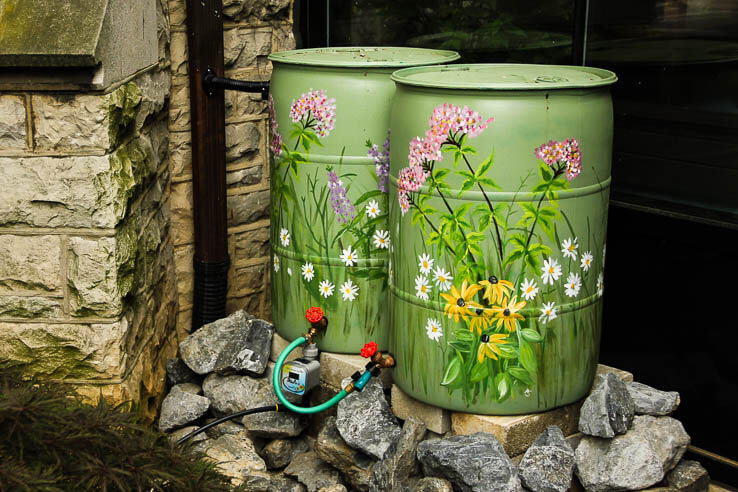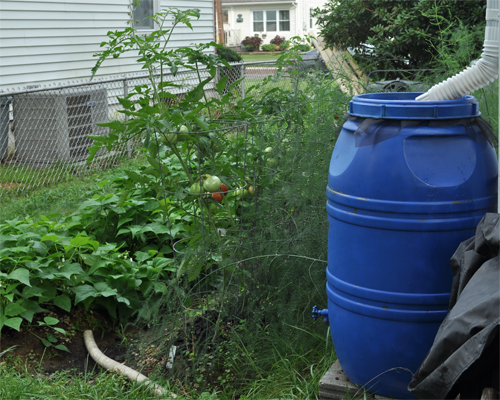Backyard Stormwater Management
When water becomes a problem in your landscape, first decide whether the solution should be engineered or nature-based. If you are trying to protect your home from repeated, destructive water infiltration, trenches, pipes, and pumps may be the answer. In other situations, streaming or ponding water may be more a nuisance than a problem. Keep in mind that as water moves through your neighborhood and your yard, it is transporting unwanted pollutants. It’s best to keep these pollutants out of our waterways. To do this, we encourage methods to SLOW, SOAK, or STORE stormwater.
SLOW-
Water flowing across smooth surfaces (think asphalt, concrete, and turfgrass) picks up speed and energy that can cause erosion problems and deliver sediment and chemical pollution to our waterways. Surface runoff (sheet flow) is collected by channels, swales, or gullies and makes its way to a receiving body of water. Sheet flow can be slowed, even reduced, by the intentional placement of plants, shrubs, and trees in strips or in beds. The slowing effect of obstacles like plants and tall grasses encourage more infiltration.
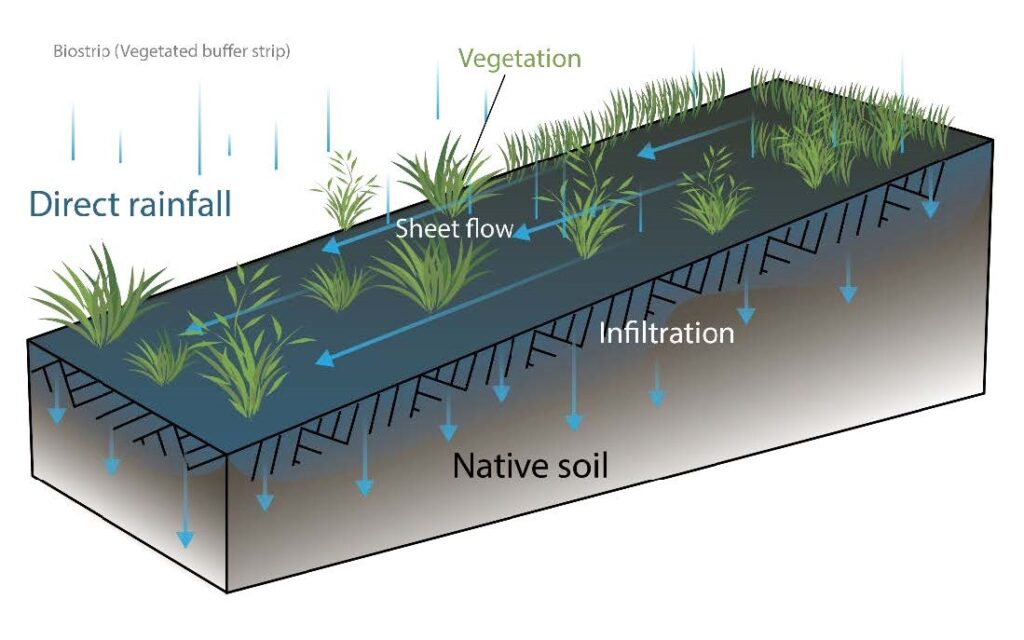
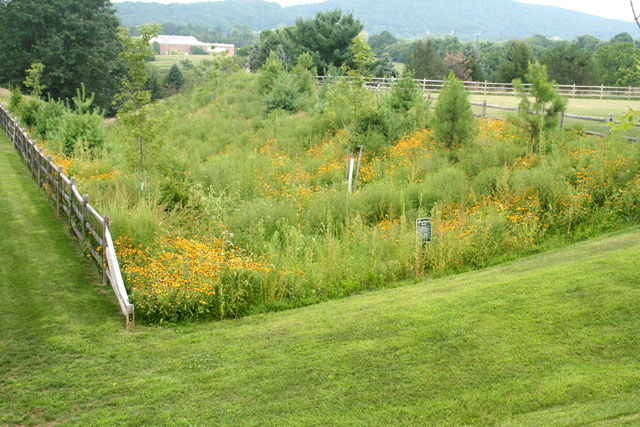
Plants serve as obstacles to moving water. Slowing it down and encouraging infiltration into soils.
SOAK-
When a rain event delivers a stream of water from roadsides, rooftops, or driveways, if not contained it will gain speed and energy on its way downhill to streams. Rain gardens are excavated basins, filled with a soil mix that encourages infiltration of rainwater into groundwater. The gardens are planted with a mix of native vegetation that can thrive under drastically changing water conditions like dry periods followed by 24-72 hours of inundation.
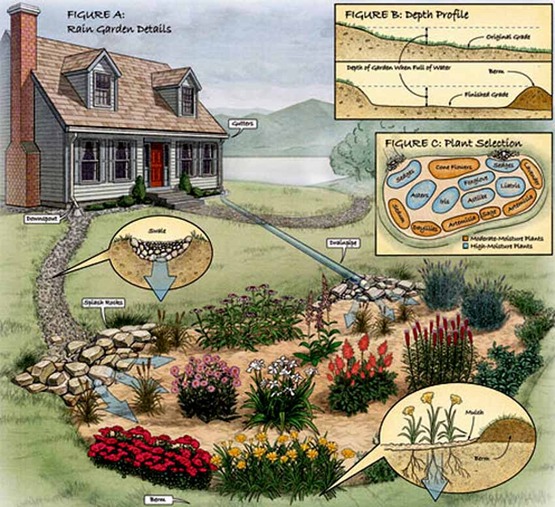
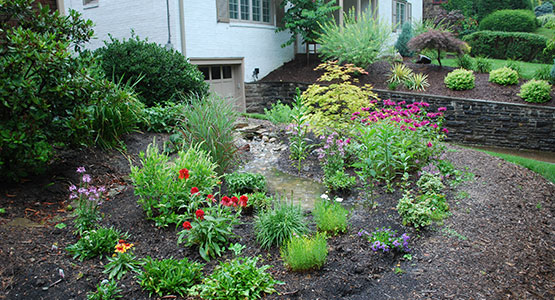
STORE –
Rainwater can be harvested from home landscapes for non-drinking uses. Rain barrels and cisterns collect water from gutters and downspouts. Water can be drained from the containers as needed OR released into green spaces more slowly than during a rain event. This minimizes the likelihood of erosion and surface runoff pollution. Rain barrels can be custom built or purchased preassembled. Cisterns have a larger capacity and can be installed under or above ground.
